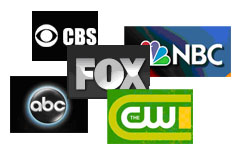As Digital Explodes, Network TV Upfront Holds Its Own

Welcome to Upfront Week in New York (and welcome also to the chief marketing officers and senior corporate advertising executives who are now receiving Jack Myers Media Business Report through relationships with their agencies, media partners and trade associations). There is less anticipation and "hype" coming into this Upfront Week than in the past. Since I published my early Television Network Upfront Forecast, market indicators have remained stable. I am reprinting below Myers Upfront CPM data from 2002-2004, when there were similar economic patterns as 2010-2012, leading to the expectation that broadcast and cable network CPMs could catapult into the double digits, with national broadcast syndication following close behind.
The Upfront originated in the day when networks presented their proposed Fall season programming to potential sponsors when advertisers would fully or partially underwrite a full season of episodes, enabling the networks to move from development and pilots to full production. Today, advertisers spread their commercials across an ever-widening spectrum of interchangeable programs, many of which will be cancelled, rescheduled or possibly never even air. While advertiser and agency executives enjoy seeing new program clips, learning the networks' anticipated scheduling, judging the comparative "pitches" and attending the scaled-back parties, most senior agency decision-makers (now called Activation Leaders) have already participated in the development process and seen most of the programs.
In fact, Upfront presentations are increasingly intended for the press and mid-agency managers, buyers and planners, plus the few client executives who venture into New York for the week and pack it full with one-to-one meetings.
The actual Upfront presentations have as much to do with "networking" as they do with the networks themselves. They have much more to do with bragging rights, press perceptions, senior network management and some celebrity visibility, and for setting the overall tone for the next several weeks of negotiations.
While Upfront presentations are less interesting and relevant than past years, the Upfront negotiations themselves promise to be fascinating. As I wrote earlier this year, "Both buyers and sellers are preparing for an aggressive negotiating process as marketers maintain their budget shift from quarterly scatter buying to the Upfront market, and as most major marketers maintain or increase their network TV budgets. Networks are poised to hold out for at least high single digit cost-per-thousand increases and the looming question is whether the double-digit barrier will be crossed by one or more networks. There are also several moderating issues that argue against double-digit increases." These moderating economic factors – including rising oil and commodity prices, fallout from the Japanese disasters, and lagging U.S. consumer spending – do not appear to date to be negatively impacting on ad spending, and especially Upfront spending. It will be surprising if the networks fail to position themselves for post-Upfront spin touting overall double- digit CPM increases.
Legacy deals and established relationships will be a primary consideration in Upfront negotiations. Agencies representing long-term reliable Upfront advertisers who have higher legacy rates will be positioned to negotiate lower cost increases, although it's unlikely any increases will fall below 8%. Those advertisers who move budgets between scatter and Upfront markets, new advertisers, those who have regularly taken options (cancelled), and those who have a lower established CPM base, will find themselves confronted with CPMs that are significantly higher than network averages, possibly as high as 16% and even 18% in selected instances. Cable networks with strong ratings growth will be better positioned to accept lower CPM increases than those required to compensate for ratings erosion. Since many advertisers have not even registered their budgets yet, actual negotiations will take a few weeks to get rolling, but then should move relatively quickly.
Although there is far less excitement surrounding an Upfront Week with fewer parties and activities, the market strength will reinforce that national TV remains the engine that pulls the advertising train. Even as digital gets all the press, marketers still invest more than 90% of their total marketing budget in legacy communications, and (for what it's worth) Upfront Week still gets more attention and is more economically relevant than Internet Week or even Advertising Week.
| 2002-2004 Broadcast Network Primetime Cost-Per-Thousand Increases | ||
| Source: Jack Myers Media Business Report | ||
| UPFRONT MARKET | ||
| NETWORK AND DAYPART | SEASON | |
| 2002/2003 | 2003/2004 | |
| Primetime | ||
| ABC | 5.00% | 15.00% |
| CBS | 11.00% | 18.00% |
| NBC | 8.00% | 14.00% |
| Fox | 7.00% | 14.00% |
| WB | 14.00% | 20.00% |
| UPN | 13.00% | 11.00% |
| The CW | ||
| Primetime | ||
| Primetime Average | 9.70% | 15.30% |
| AM News | 7.00% | 14.00% |
| Daytime | Flat | 10.00% |
| Evening News | 1.00% | 8.00% |
| Late Night | 7.00% | 15.00% |
| Total Broadcast Average | 13.90% | |
You are receiving this e-mail as a corporate subscriber to Jack Myers Media Business Report. Re-distribution in any form, except among approved individuals within your company, is prohibited. As a subscriber you have full access to all archives and reports at www.jackmyers.com. If you require your ID and password, contact maryann@jackmyers.com


